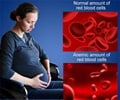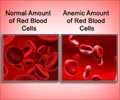In West Africa, national, cross-sectional, household-based demographic health surveys were used to map the distribution of anemia risk in preschool-age children.
In West Africa, national, cross-sectional, household-based demographic health surveys were used to map the distribution of anemia risk in preschool-age children.The use of such maps has significant practical implications for targeted control of anemia in these countries, such as guiding the efficient allocation of nutrient supplements and fortified foods, and contributing to the planning and evaluation of resource requirements for geographical delivery of transfusion services for severe anaemia cases.
The authors say: "The development of maps indicating the geographical risk profile of anaemia controlling for malnutrition and major infections would allow assessment of the risk of anaemia due to different causes, which would in turn constitute an important evidence base to work out the best balance between interventions."
In an accompanying Perspective article, Abdisalan Noor (uninvolved in the research) from the Kenya Medical Research Institute, Nairobi, Kenya, comments that: "The application of [model-based geostatics] to national sample survey data on anaemia is an important advance in our understanding of the geography of risk and will provide a more robust framework to computing disease burdens and attributable disability adjusted life years."
Source-Eurekalert
















